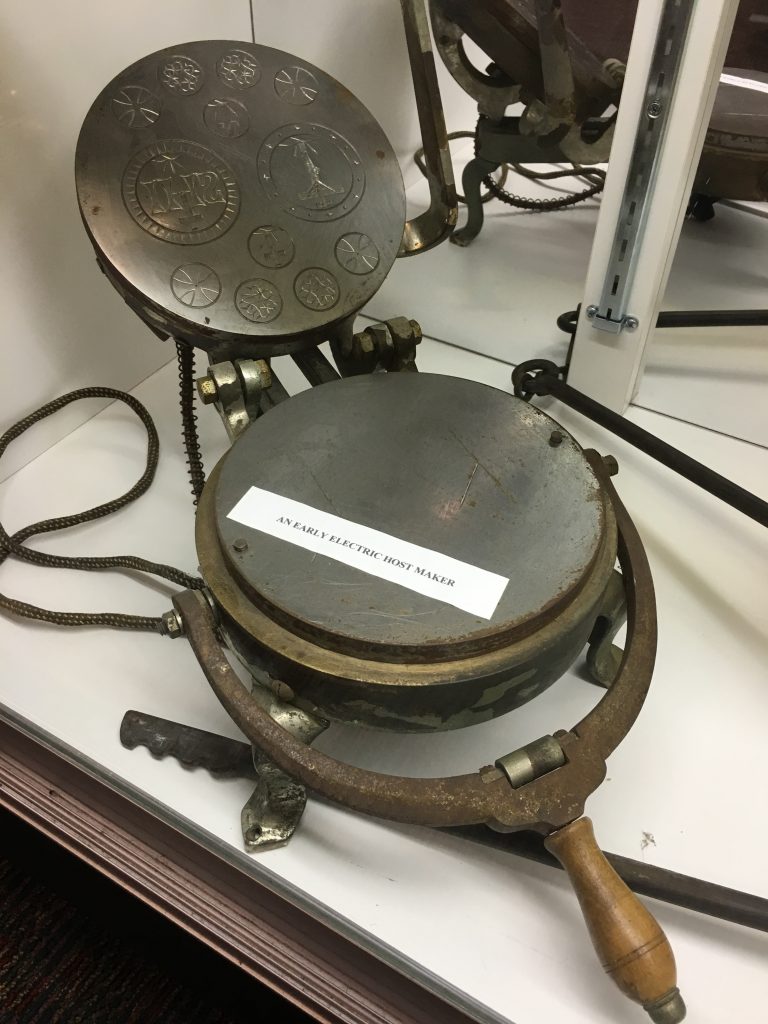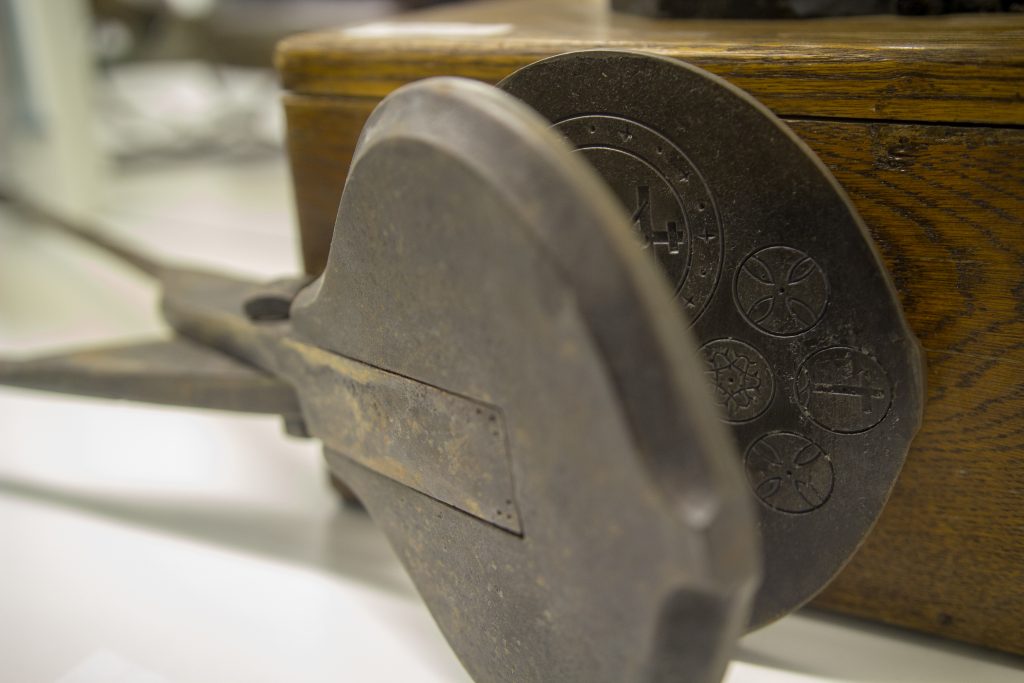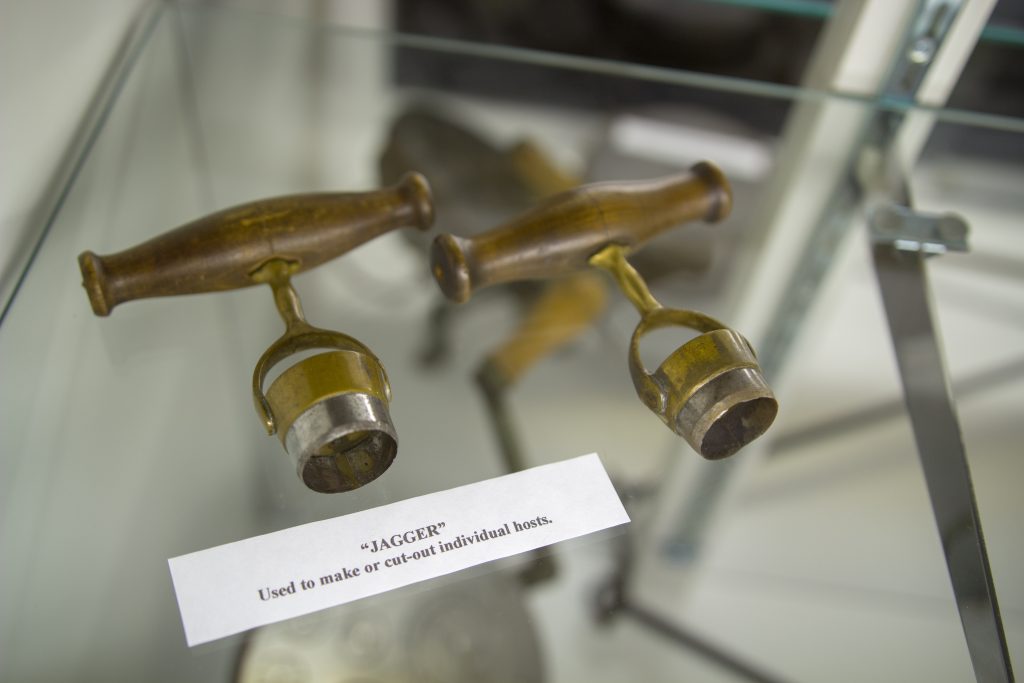June 5, 2018 // Diocese
Communion bread makers on display at museum
The Church’s recent celebration of Corpus Christi Sunday, or the Solemnity of the Most Holy Body and Blood of Christ, encouraged the faithful to pause and reflect upon the gift of the Eucharist. The use of unleavened bread as a host can be traced back to the Last Supper, at which Jesus celebrated the Passover meal with His disciples. But the process of actually making unleavened bread suitable for consecration at Mass has a rich history all on its own. Fort Wayne’s Cathedral Museum offers visitors a glimpse into that heritage.

An instrument similar to a waffle maker was used to bake Communion bread before the days of mass production. — Nate Proulx
Tucked away in a glass-covered cabinet at the museum is a collection of simple instruments that were used to make Communion bread in small quantities before the days of mass production. Museum director and pastor at St. Mary, Mother of God Parish in Fort Wayne, Father Phillip Widmann, said he found all the items at the Cathedral of the Immaculate Conception and assumes that’s where they were used.
 The collection’s oldest piece dates back to a time before the advent of electricity. It resembles a waffle maker but with long handles, which were necessary to bake the bread in a fire. After combining the proper amounts of wheat flour and water, the mixture would be poured in and baked. Only 10 hosts could be produced each time. With the introduction of electricity, a similar instrument was used, but rather than long handles there was a long electrical cord. Also on display are two “jaggers” that were used to individually cut out hosts from a large sheet of bread.
The collection’s oldest piece dates back to a time before the advent of electricity. It resembles a waffle maker but with long handles, which were necessary to bake the bread in a fire. After combining the proper amounts of wheat flour and water, the mixture would be poured in and baked. Only 10 hosts could be produced each time. With the introduction of electricity, a similar instrument was used, but rather than long handles there was a long electrical cord. Also on display are two “jaggers” that were used to individually cut out hosts from a large sheet of bread.
 Religious communities, including nuns serving in a parish, would typically devote the long amounts of time needed to make Communion bread. While the method of baking has been modernized over the years there are still religious communities today that perform this service, along with commercial companies.
Religious communities, including nuns serving in a parish, would typically devote the long amounts of time needed to make Communion bread. While the method of baking has been modernized over the years there are still religious communities today that perform this service, along with commercial companies.
All are welcome to view these historical treasures at Cathedral Museum, located in the lower level of the Archbishop Noll Catholic Center, 915 S. Clinton St. Admission and parking are free. The museum is open Tuesdays through Fridays from 10 a.m. to 2 p.m. or by appointment. Call 260-422-4611 for more information.
The best news. Delivered to your inbox.
Subscribe to our mailing list today.






